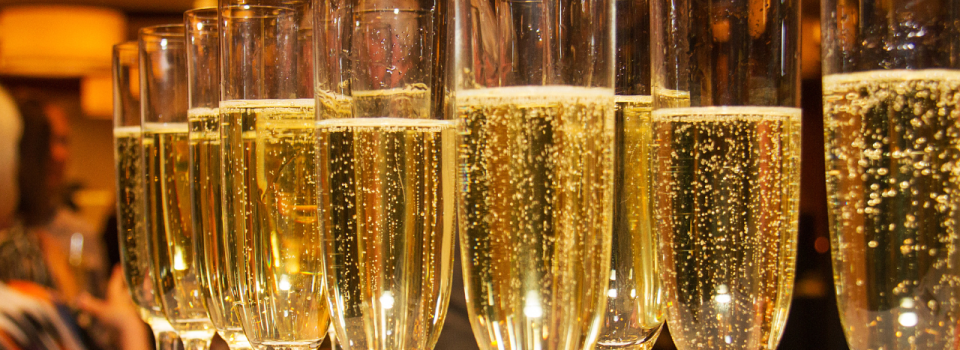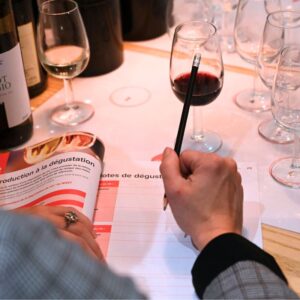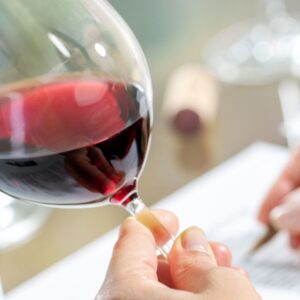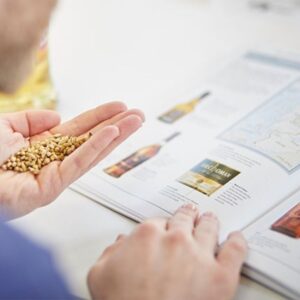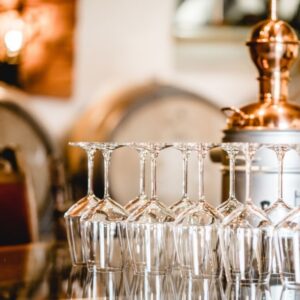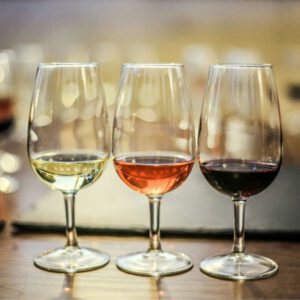A symbol of celebration, refinement, and the French art de vivre, Champagne has illuminated tables around the world for centuries.
Behind its delicate bubbles and golden sparkle lies a unique savoir-faire — the result of generations of innovation, passion, and precision.
Each bottle reflects a singular terroir, a demanding climate, and a distinctive style shaped by the renowned Traditional Method (also known as the Méthode Champenoise), which gives this sparkling wine its incomparable elegance and finesse.
To celebrate World Champagne Day this Friday, October 24, 2025, let’s explore this legendary appellation — its fascinating history, emblematic grape varieties, diverse terroirs, and the secrets behind its production.
A journey to the heart of Champagne, where technical mastery meets the magic of bubbles.
At Weeno, we train both enthusiasts and professionals to deepen their understanding of the world’s great wines — including Champagne — through our professional wine courses, available in Paris, Marseille, and online.
Our programs are eligible for CPF funding (with CLOE or LTE certifications) and include WSET qualifications, masterclasses, and specialized wine-tasting sessions.
After completing your training, you can register independently for the official WSET exams to validate your certification.
1. What is Champagne?
Champagne is far more than just a sparkling wine.
It is one of the world’s most strictly regulated Appellations d’Origine Contrôlée (AOC), born on the rolling hills of the Champagne region in northeastern France.
This exceptional wine is crafted exclusively from grapes grown, vinified, and blended within a precisely defined area, under rigorous rules that ensure its authenticity and quality.
A unique terroir shaped by a demanding climate
The Champagne appellation covers around 34,000 hectares, stretching across more than 300 villages and divided into five major sub-regions:
- Montagne de Reims, renowned for its powerful Pinot Noir;
- Vallée de la Marne, where Meunier adds fruitiness and suppleness;
- Côte des Blancs, the kingdom of Chardonnay, celebrated for its finesse;
- Côte de Sézanne, rounder and more floral in profile;
- Côte des Bar, further south, known for its chalky freshness and complexity.
Its semi-continental climate and chalky limestone soils give Champagne its trademark tension, elegance, and precision — a rare balance of acidity, minerality, and freshness.
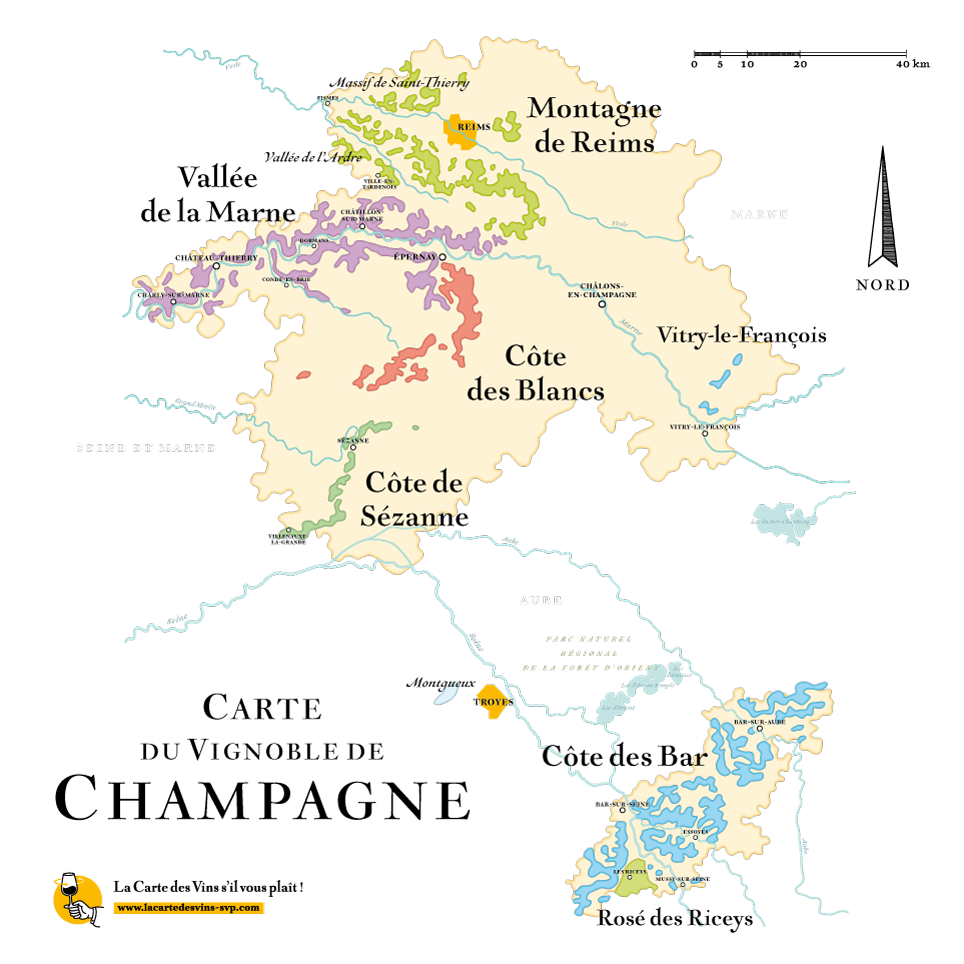
The origins of a legend
Champagne is not just a wine — it’s an accidental invention that became a global icon.
Its story, blending science, intuition, and artistry, reveals how patience and technical mastery shaped the legend of this unique sparkling wine.
Contrary to popular belief, Dom Pérignon did not “invent” the bubbles, but he played a key role in defining the Champagne style.
In the 17th century, this Benedictine monk from the Abbey of Hautvillers refined the art of blending still wines, seeking to express the richness of the region’s terroirs.
While trying to control unpredictable fermentations in the region’s cool climate, winemakers discovered the phenomenon of secondary fermentation in the bottle — the foundation of the traditional Champagne method.
What was once considered a “flaw” in the wine soon became its greatest asset, thanks to technical innovation and the perseverance of the region’s vignerons.
From sweet to brut: the evolution of style
By the 19th century, Champagne had conquered the royal courts of Europe.
At the time, it was often heavily sweetened, particularly to please British and Russian palates.
Over time, however, the style evolved toward drier wines, known as Brut Champagnes, which highlight the purity of fruit and minerality of the terroir.This shift marked a turning point: Champagne was no longer merely a luxury wine — it became a wine of expression, precision, and gastronomy, as comfortable on a tasting table as it is on a celebration one.
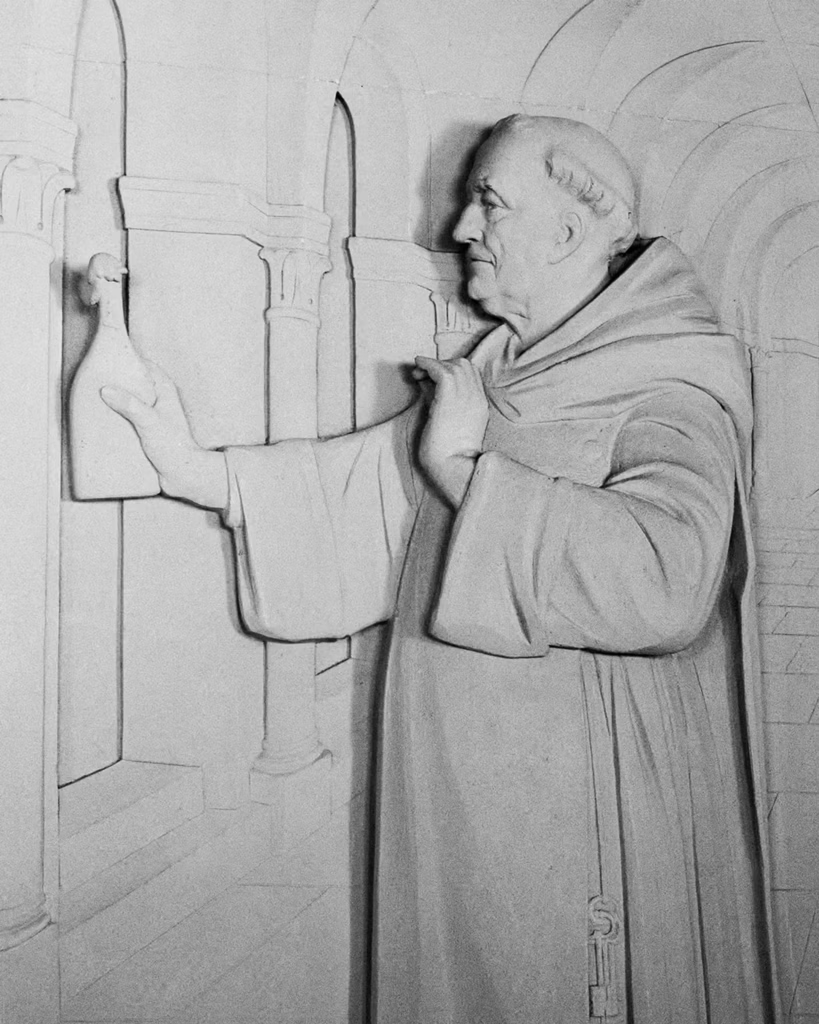
2. The grapes of Champagne
If Champagne captivates the world with its finesse and complexity, it’s largely thanks to the subtle art of blending.
Each bottle represents a delicate balance of grape varieties, terroirs, and vintages, meticulously harmonized to create a distinctive house style.
Among the seven grape varieties permitted under the Champagne AOC, three dominate production: Chardonnay, Pinot Noir, and Meunier.
Chardonnay — Freshness and Elegance
The emblematic white grape of the Côte des Blancs, Chardonnay gives Champagne its vibrancy, mineral tension, and aromatic purity.
Its floral, citrus, and chalky notes evolve beautifully over time into aromas of toasted bread, honey, and nuts.
Champagnes made exclusively from Chardonnay are called Blanc de Blancs, known for their refinement, precision, and exceptional aging potential.
Aromatic profile: citrus, white flowers, chalk, hazelnut.
Role in the blend: acidity, freshness, and longevity.
Pinot Noir — Structure and Power
Grown mainly in the Montagne de Reims and Côte des Bar, Pinot Noir is the most widely planted grape in Champagne.
It provides body, depth, and complexity, contributing red fruit aromas and a more vinous texture on the palate.
Champagnes dominated by Pinot Noir tend to be fuller-bodied with impressive length and intensity.
Aromatic profile: raspberry, cherry, redcurrant, soft spice.
Role in the blend: structure, length, and backbone.
Meunier — Fruit and Roundness
Typical of the Vallée de la Marne, Meunier (formerly called Pinot Meunier) is a black grape with white juice, known for its softness, fruit-forward style, and early ripening.
It brings a generous, approachable character to blends, balancing the Chardonnay’s liveliness with the Pinot Noir’s structure.
Less acidic and more resilient in cooler, wetter areas, it plays a vital role in the region’s balance and adaptability.
Aromatic profile: apple, pear, plum, stone fruit.
Role in the blend: fruitiness, roundness, and harmony.
The Rare Grapes — A Heritage Rediscovered
Four historical varieties, long forgotten, are still authorized in the Champagne AOC and are making a quiet comeback:
- Arbane, lively and floral;
- Petit Meslier, crisp and zesty;
- Pinot Blanc and Pinot Gris, rounder and more generous.
Though they represent less than 0.3% of the vineyard, these rare grapes contribute valuable diversity and heritage.
A few visionary winemakers use them to craft distinctive cuvées that honor Champagne’s ancestral richness and biodiversity.
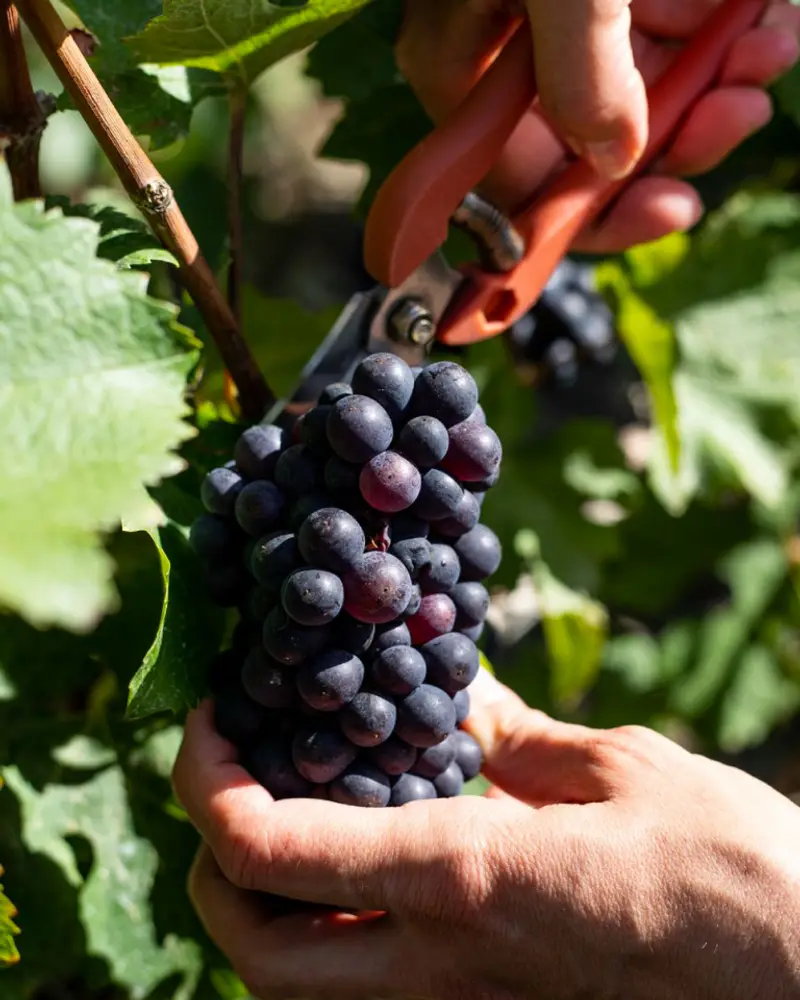
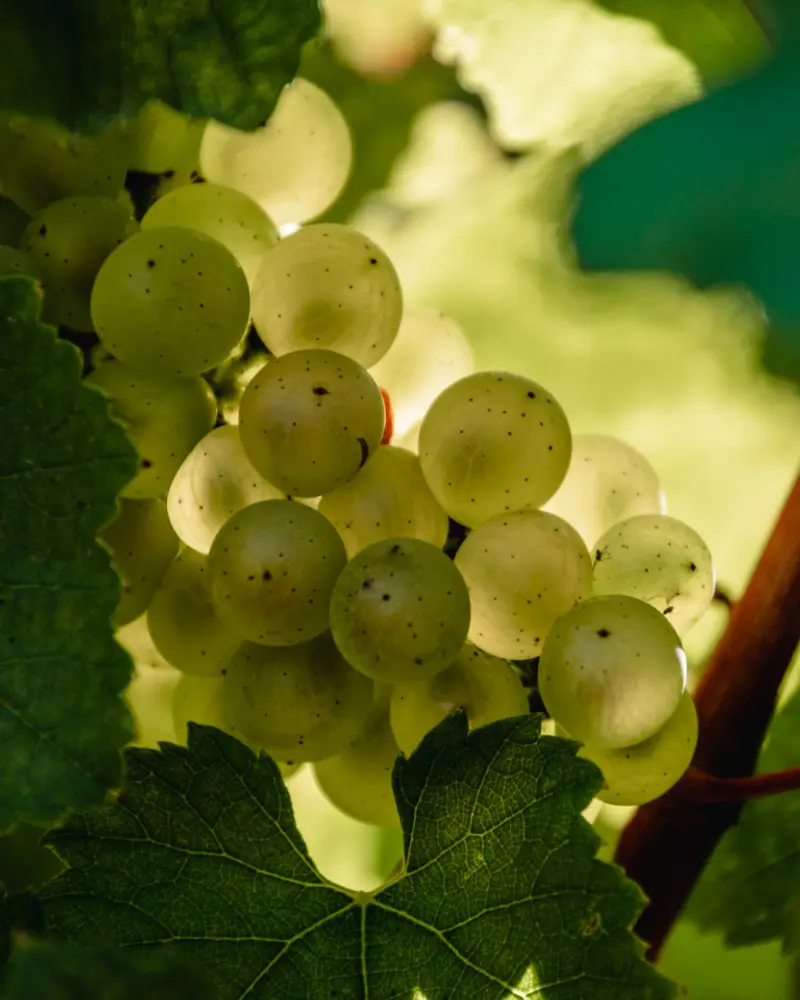
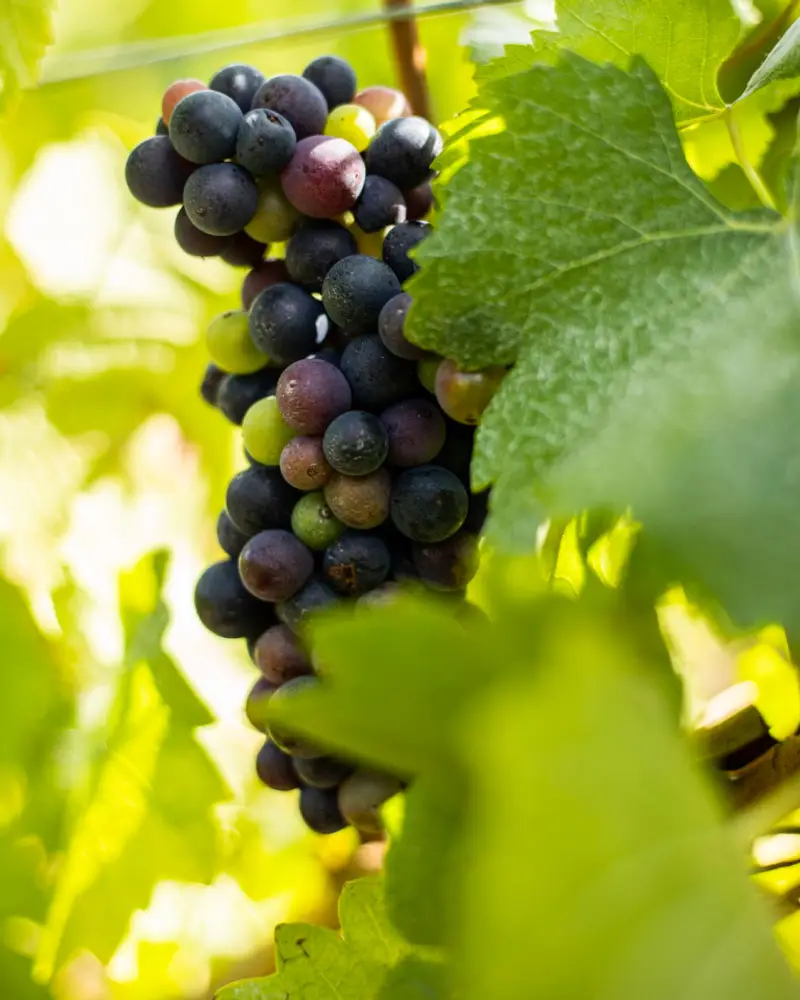
3. The secrets of Champagne making — the Traditional Method
Champagne owes its worldwide reputation for delicate bubbles and aromatic complexity to a unique winemaking process: the Traditional Method, also known as the Méthode Champenoise.
This long and meticulous technique requires absolute mastery of every step — from vineyard to bottle.
3.1 Pressing
The grapes are harvested exclusively by hand to preserve their integrity.
They are then gently pressed to obtain a clear, pure juice without extracting color or tannins.
This juice, called must, is separated into several fractions — the cuvée (first press) and the taille (second press) — depending on the pressure applied.
3.2 The first fermentation
The must ferments in stainless-steel vats (or sometimes oak barrels) to produce a still base wine, meaning a wine without bubbles.
During this alcoholic fermentation, the grape sugars are converted into alcohol, developing primary aromas of fruit, flowers, and minerality.
The wine then rests through the winter before blending begins.
3.3 Blending
The true art of Champagne lies in blending.
Winemakers combine wines from different grape varieties, vineyard plots, and vintages to achieve a harmonious and consistent balance.
It is at this stage that a house’s style is born — whether defined by power, freshness, or roundness depending on the proportions of Chardonnay, Pinot Noir, and Meunier.
Cuvées made from a single harvest bear the label Vintage (Millésimé), while multi-vintage cuvées reflect the consistency of the house style year after year.
3.4 The second fermentation in bottle and lees aging
Once the blend is finalized, a liqueur de tirage — a mixture of yeast, sugar, yeast nutrients, and a clarifying agent — is added before bottling.
The bottles are sealed with a temporary crown cap and stored horizontally in cool cellars, sometimes for many years.
This triggers the second fermentation in the bottle, which naturally produces carbon dioxide.
Trapped inside, this gas forms the fine bubbles that define Champagne.
After fermentation, the yeasts gradually decompose, enriching the wine with secondary aromas of brioche, pastry, biscuit, and bread dough.
This process, called autolysis, lasts at least 12 months and often extends for several years to build depth and texture.
3.5 Riddling and Disgorgement
Once maturation is complete, bottles are placed on special racks (pupitres) for riddling — they are turned and slightly tilted each day to move the yeast sediment toward the neck.
Traditionally done by hand, riddling is now often performed mechanically using gyropalettes.
The deposit is then removed through disgorgement, during which the frozen neck of the bottle is opened and the sediment expelled by the internal pressure of the wine.
3.6 Dosage and Corking
Before final corking, a liqueur d’expédition — a blend of wine and sugar — is added to determine the sweetness leveland final style of the Champagne: Brut Nature, Extra Brut, Brut, Demi-Sec, etc.
The bottle is then permanently corked, secured with a wire cage (muselet), labeled, and ready to be enjoyed.
Weeno Tip: It is this second fermentation in the bottle that creates Champagne’s fine, persistent bubbles — the hallmark of its creamy texture and refined elegance.
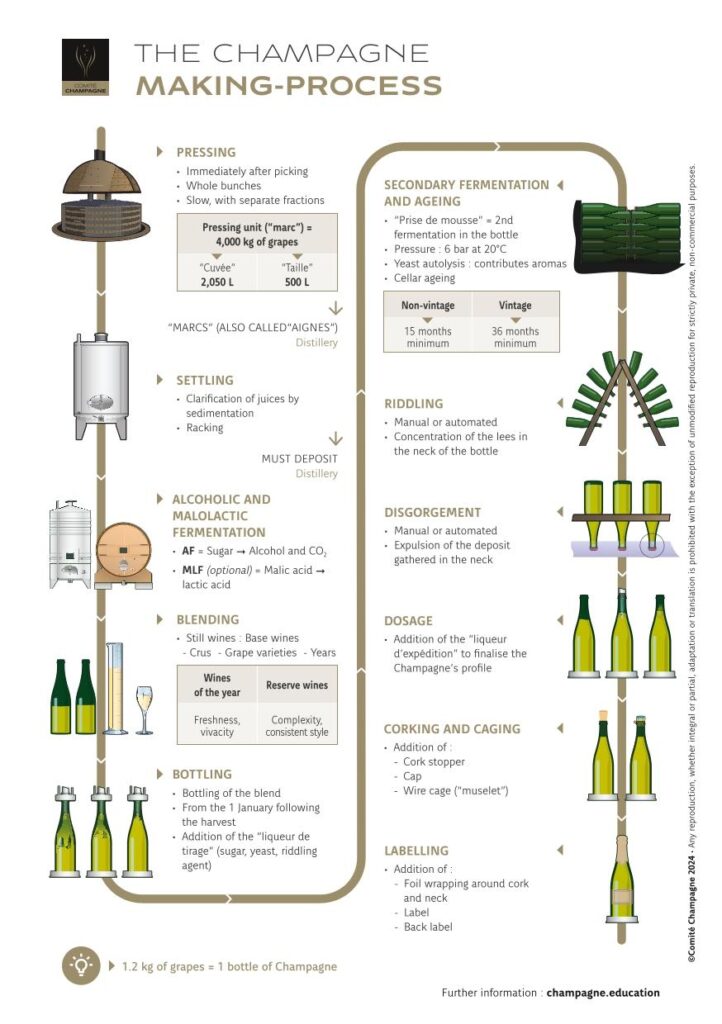
4. The styles and categories of Champagne
Every Champagne tells a different story — shaped by its blend, dosage, and vintage.
Behind familiar terms on the label (Brut, Blanc de Blancs, Rosé, Vintage) lie a range of styles that reflect the winemaker’s choices and the wine’s unique personality.
Understanding these nuances is the key to selecting the perfect Champagne for every occasion.
Dosage: finding the perfect balance
The dosage refers to the amount of sugar added with the liqueur d’expédition right after disgorgement.
It determines the Champagne’s sweetness level — from bone-dry to richly sweet:
| Label Mention | Sugar Content (g/L) | Style |
| Brut Nature / Zero Dosage | 0–3 g/L | Very dry, crisp, no added sugar |
| Extra Brut | 0–6 g/L | Dry, taut, highly precise |
| Brut | 0–12 g/L | Balanced, the most common style |
| Extra Dry | 12–17 g/L | Slightly softer, subtle sweetness |
| Sec | 17–32 g/L | Noticeable sweetness |
| Demi-Sec | 32–50 g/L | Round and indulgent |
| Doux | 50+ g/L | Very sweet, the historical style |
A Brut Nature Champagne highlights minerality and freshness, while a Demi-Sec pairs beautifully with fruit-based desserts.
The main Champagne styles
Blanc de Blancs
Made exclusively from Chardonnay (or other white grapes), Blanc de Blancs Champagnes are renowned for their finesse, tension, and chalky minerality.
Perfect for those who love precision, purity, and freshness.
Blanc de Noirs
Produced solely from black grapes with white juice (Pinot Noir and/or Meunier), Blanc de Noirs offers richer textures, red fruit aromas, and a more vinous mouthfeel.
Rosé Champagne
Crafted either by blending still red and white wines (assemblage) or by macerating black grapes (saignée method), Rosé Champagne charms with notes of strawberry, raspberry, and redcurrant.
It’s a perfect match for summer aperitifs or slightly spicy dishes.
Vintage or Non-Vintage?
- Non-Vintage (NV) Champagnes are blends of several harvests, ensuring consistency of house style year after year.
- Vintage Champagnes, made from a single exceptional harvest, express the unique character of that year.
Often richer and more complex, they are produced in smaller quantities and age longer before release.
Prestige cuvées and special selections
Many houses create prestige cuvées, crafted from the best crus and reserved for special occasions.
Examples include Dom Pérignon by Moët & Chandon, Cristal by Louis Roederer, or Comtes de Champagne by Taittinger.
Often vintage-dated, these wines represent the pinnacle of Champagne craftsmanship — marked by long aging, precision, and perfect balance between power and elegance.
Weeno Tip: Recognizing Champagne styles helps you refine your food and wine pairings — a key topic in our professional wine training programs.
Because behind every bubble lies intention, craftsmanship, and terroir waiting to be understood.
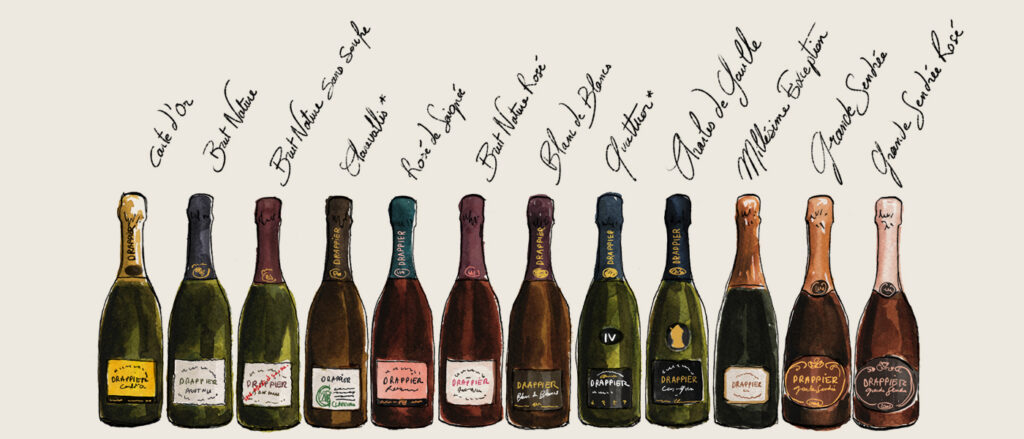
5. How to taste Champagne like a professional
Behind the pleasure of a glass of Champagne lies an entire art of tasting.
Temperature, glassware, observation, and pairing — every detail matters to reveal the wine’s finesse and appreciate its aromatic complexity.
Here’s how to taste Champagne like a professional — with curiosity, precision, and deep respect for the winemaker’s craft.
The ideal serving temperature
If served too cold, Champagne loses its aromas; too warm, it becomes heavy and unbalanced.
The ideal serving temperature depends on the style of the wine:
| Champagne Style | Recommended Temperature |
| Non-Vintage Brut / Extra Brut | 8–10°C (46–50°F) |
| Blanc de Blancs / Rosé | 9–11°C (48–52°F) |
| Vintage / Prestige Cuvée | 10–12°C (50–54°F) |
Weeno Tip: Chill the bottle in a 50/50 mix of ice and water for 20 to 30 minutes to achieve a stable, even temperature — never freeze it, and avoid the freezer shortcut.
Choosing the right glass: flute or tulip?
While the flute remains iconic, its narrow shape often restricts aromatic expression.
Today, sommeliers prefer the tulip-shaped glass — wider in the middle and narrower at the top — which allows the bubbles to develop while concentrating the aromas.
Avoid wide coupes, which disperse the mousse and flatten the wine’s delicate aromas.
Observe, smell, taste
As with all fine wines, tasting Champagne engages the three key senses:
- Sight: Observe the color, clarity, and fineness of the bubbles. Consistent, persistent effervescence is a sign of quality.
- Nose: Identify the primary aromas (floral, citrus, fresh fruit), followed by secondary notes (brioche, toast, hazelnut) developed during lees aging.
- Palate: Evaluate the texture (creamy, vibrant, or full-bodied), freshness, length, and balance between acidity, sweetness, and mousse.
The bubbles are not just decorative: they amplify aromas and structure the palate, giving Champagne its signature texture and elegant mouthfeel.
You can download the WSET Systematic Approach to Tasting (SAT) to help you identify aromas, assess structure, and refine your tasting notes.
Classic food pairings
Champagne has a remarkable ability to accompany food from aperitif to dessert.
Here are a few timeless pairings:
- Aperitif: Non-Vintage Brut or Extra Brut — crisp, lively, and refreshing.
- Seafood and Oysters: Blanc de Blancs — mineral, pure, and saline.
- Roast Poultry or Aged Cheese: Blanc de Noirs or Vintage Champagne — structured and complex.
- Light Fruit Desserts: Demi-Sec — balances sweetness and fruit.
The secret?
Match the Champagne style to the texture and intensity of the dish:
freshness for briny seafood, roundness for creamy sauces, and power for rich, savory flavors.
Weeno Tip: The more you taste mindfully, the more Champagne reveals its complexity — proof that behind every glass lies both science and emotion.
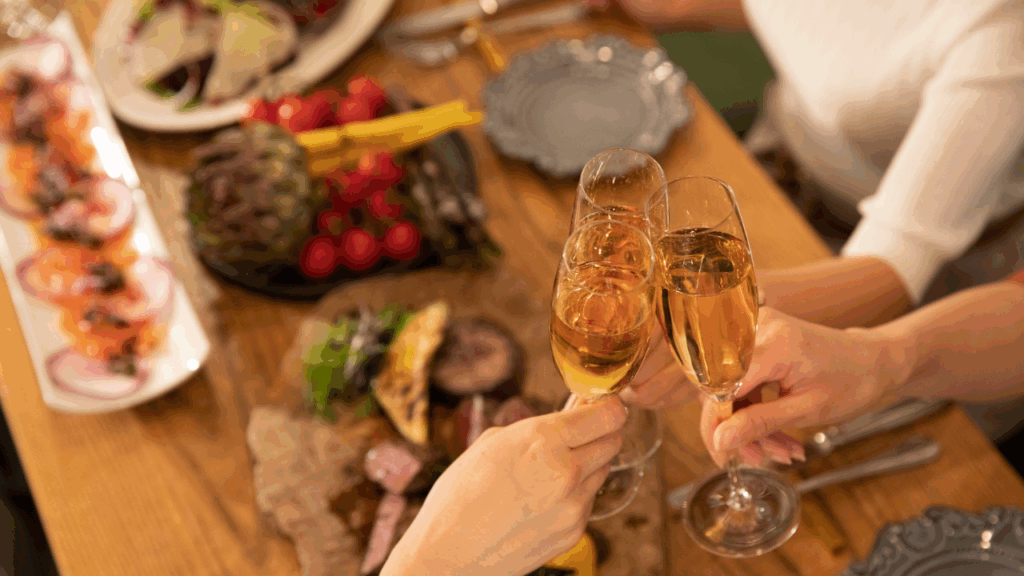
6. Champagne today: innovation and sustainability
Long celebrated as a symbol of luxury and tradition, Champagne is reinventing itself in response to climate challengesand the expectations of a new generation of wine lovers — driven by authenticity, traceability, and respect for nature.
Between eco-responsible practices, innovative styles, and the rise of independent grower-producers, Champagne is experiencing a quiet yet profound revolution.
A vineyard in transition
The region has been a pioneer in collective sustainability efforts.
Since the 2010s, many estates have adopted environmentally friendly practices — reducing chemical inputs, maintaining grass cover between rows, recycling water, and cutting carbon emissions.
Two key certifications reflect this commitment:
- Viticulture Durable en Champagne (VDC) – a regional certification evaluating the overall environmental impact of vineyard operations.
- Haute Valeur Environnementale (HVE) – a national label guaranteeing the preservation of biodiversity and natural resources.
Today, over 60 % of Champagne’s vineyards are certified or in transition — a major step forward for one of France’s most historic appellations.
The rise of grower-Champagnes
Alongside the great houses, a new generation of artisan winemakers, known as Récoltants-Manipulants (RM), is challenging convention.
These independent producers craft their own cuvées exclusively from their own grapes, highlighting the identity of each parcel and the expression of terroir.
The result ? Champagnes that are more distinctive, often produced in limited quantities, where the hand of the vigneronis unmistakable.
Wine enthusiasts appreciate their honesty — sometimes zero-dosage wines that reveal the purest expression of fruit and soil.
New styles for a new generation
Modern Champagne trends celebrate precision and transparency:
- Extra Brut and Brut Nature – low-sugar styles that express the terroir’s authenticity and the wine’s natural freshness.
- Parcel-based Champagnes – crafted from a single vineyard or lieu-dit, offering a detailed interpretation of site, much like Burgundy’s grands crus.
- Oenological experiments – aging under natural cork, amphora fermentations, and trials in biodynamic viticulture are expanding Champagne’s creative horizons.
These innovations are redefining Champagne: still festive and refined, but now more conscious, authentic, and deeply connected to its land.
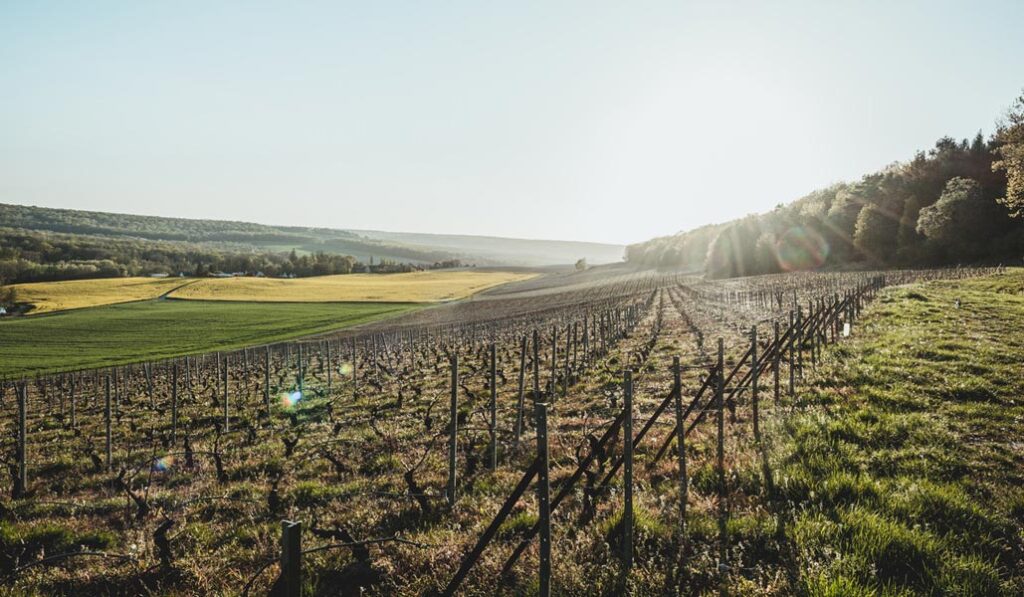
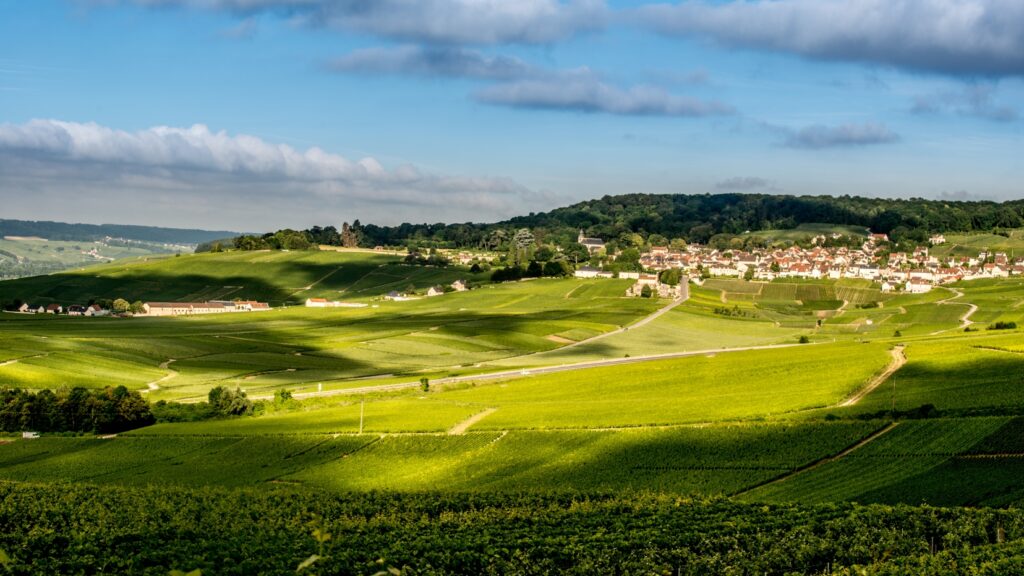
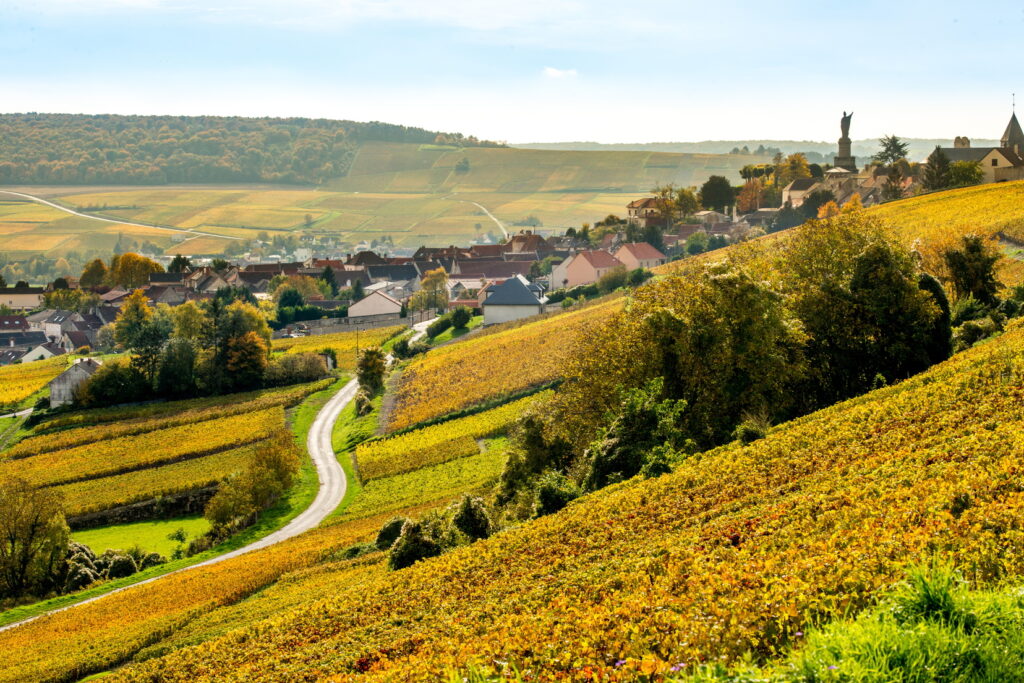
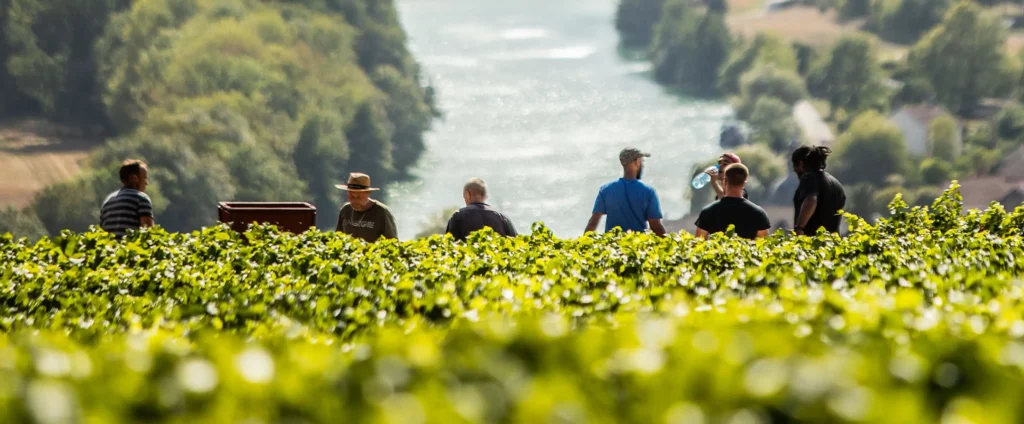
Champagne: the art of elevating the moment
Refined, complex, and universally celebrated, Champagne embodies everything that makes wine great: the precision of the craft, the beauty of the terroir, and the magic of transformation.
Behind every bubble lies the patient work of passionate vignerons, the richness of a unique land, and centuries of transmitted expertise.
More than a symbol of celebration, Champagne represents a true art of living — the art of savoring each moment with elegance and gratitude.
This World Champagne Day, let’s raise our glasses to curiosity, discovery, and the enduring craftsmanship that makes Champagne shine across the world.
👉 Want to truly understand Champagne?
Join our professional wine courses in English, available in Paris, Marseille, or online, and eligible for CPF funding with CLOE or LTE.
After completing your training, you can independently register for the official WSET exams to earn your internationally recognized qualification.
